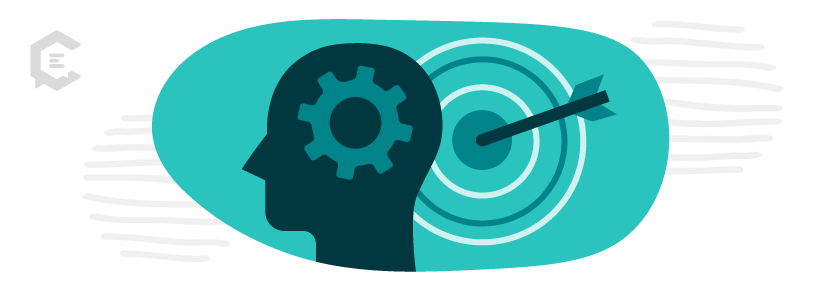Eighty-five percent of Americans use the internet every day.
Yes, you read that correctly.
With consumers increasingly online, it makes sense for marketers to meet them where they are. That means creating high-quality digital content that captures their attention and drives engagement.
But before you can do that, you have to understand what your audience needs.
In this article, we’ll dive into the importance of building and understanding your target audience in the context of content creation. We’ll cover audience analysis, engagement metrics, and strategies to tailor your content effectively.

The Importance of Audience Building in Content Marketing
Content marketing has come a long way from blogs and articles. And with its evolution comes challenges. We all know content is king. But, the sheer volume of content out there for consumers can overwhelm them.
Without the right audience, even the best content can fall flat. Audience building is the bridge between content creation and meaningful engagement. Building an audience through your content leads to the following:
- Personalization: Starting with your audience lays the foundation for your content creation. From there, you can craft relevant content that resonates.
- Enhanced Engagement: When content resonates with its audience, it leads to more engagement. It’s at least more likely to be liked and shared.
- Better ROI: Enhanced engagement doesn’t just mean more likes. It often results in higher conversion rates.
- Quality Feedback: Your engaged audience will let you know what’s working and what isn’t. That’ll help you adjust and refine your content over time.
Now, you know the why behind the importance of audience building. But what about the how?
Developing Your Audience
Building your audience is about fostering and nurturing a connection over time. Once you have a well-developed audience, it can be one of the most significant assets to your brand. Here’s how to effectively start:
Brand positioning statement
Yeah, we know you want to get started with buyer personas. However, you need a brand positioning statement before defining the audiences you want to reach.
If you already have a brand positioning statement, move on to the next step. If you don’t yet have one, you’re in luck! We created a guide on how to draft your brand positioning statement with confidence just for you.
Your brand positioning statement needs to answer four questions:
- Why is your brand here?
- Who is your brand here for?
- What need does your brand fulfill better than anyone else?
- What do you want your brand to be remembered for?
This brand positioning statement gives structure to every otter step. Don’t skip creating one.
Audience analysis
Chances are you’ve already gathered some audience on your data. Start with demographics that provide a general overview of who your audience is, including their:
- Age
- Gender
- Occupation
- Education
- Location
But we’re not going to stop there.
Psychographics: going deeper
To build the right audience, it’s essential to go beyond demographics. Psychographics dive deeper into your target audiences’:
- Personalities
- Values
- Opinions
- Attitudes
- Interests
- Lifestyles
That data is extremely valuable because it helps you answer two essential questions about your audience:
- Why do they make certain decisions?
- What drives them?
Tools and techniques for audience analysis
We live in a world with a wealth of tools available to help you gather your audience data. Here are some essentials.
- Google Analytics: Google Analytics is a great tool that offers data on engagement metrics like website visits, user locations, page visit times, and click-through rates.
- Social Media Insights: Social media platforms have detailed analytics about user patterns and behaviors that you can tap into. Use a tool like Brandwatch to streamline your data gathering. It can collect billions of conversations around your brand, organize them, and use AI to identify the most valuable insights.
- SEO Tools: SEO is essential to ensuring your content reaches your audience. But it can also help you gather data. Platforms like Semrush or Ahrefs can help you find the keywords your customers are searching for and hone in on your audience.
- Surveys and Quizzes: Don’t sleep on surveys and quizzes. Directly asking your audience about their pain points and needs can offer insights other data might miss.
Creating your buyer personas
It’s finally time. Buyer personas are fictional representations of your ideal target customers. They’ll guide your content creation. All the steps you’ve taken so far will inform what personas you create.
Your personas will help segment your audience based on various characteristics. Ask questions as you build them to get as specific as possible. Each buyer persona should include:
- Name and role
- Demographics
- Goals and challenges
- Values and fears
- Buying behavior
You’ll know who you’re targeting once you pinpoint your personas. That will help you craft content that speaks directly to them, addresses their problems, and offers personalized solutions.
Refine and adapt
An important note: your audience is always evolving. Regularly review your data and buyer personas and make any adjustments as needed.
Crafting Your Content
Alright, we’ve done our audience analysis and created our buyer personas. It’s finally time to create some high-quality, relevant content that resonates.
How do we do that? Great question.
Each content type has specific best practices, but they all have a general list of steps.
Form a plan
Before that first word ever gets written, a plan must exist. Assign roles for creation, editing, and publishing. If you are collecting data and measuring for effectiveness, get that sorted beforehand, too.
To support your SEO goals, make sure these parameters are laid out well in advance. Generally, the content brief or outline will include this additional data, such as the keywords to support, content length, and competitive analysis.
Research
You might be excited to start writing right away, but researching your content effectively can save a lot of trouble down the road.
Some things to research include:
- What experts or SMEs can discuss this topic inside and outside your company?
- Who is likely to engage and share this content?
- What other purposes can you use the content for?
- How will you update the content to meet changing news cycles, laws, or data?
- What citation or source referencing style will you use to let readers know you did your research?
Write with the end in mind
With a plan and research in place, it’s now time to write! A content brief should keep the writer on target with the basic information and calls to action.
Your content should serve a specific goal while weaving into your brand’s overall mission. It could be getting the reader to purchase, take the next step, or become more familiar with your brand’s values.
Arm your writers with everything they need to reduce the revisions they may need, from brand mission to AP standards to style guides. Providing everything you can will reduce the creators’ guesswork and ensure your content’s quality.
Review and revise
Sometimes, the revision process can take as long as the writing or even longer. That’s because the stakeholders take over and look to see if the goals laid out in step one are truly being accomplished.
It’s also possible that the content might meet the original goals but still not be quite the right fit. It’s really important to set expectations. Remind everyone that the direction of the content can and will change over time. And make sure writers don’t get too attached to their words. They should adapt your tone and topic to support your brand’s overall efforts.
Promote
So, you’ve created content that meets your goals and looks amazing. How will you ensure that your audience sees all that effort and planning?
While much of the promotional strategy may have been set in step one, you could have changed your mind on some things. Maybe you’ve even thought of new channels of distribution. Don’t limit yourself to where the content can go. And don’t be afraid to repurpose.
Blog posts often become eBooks that can easily morph into white papers and then become the inspiration for Tweets to industry influencers.
You’ll be surprised at how well-reused content can work.
Storytelling and its impact
Effective storytelling can magnify the power of your content. Storytelling is the key to turning average content into an engaging narrative that captures your audience’s attention and inspires. And it’s essential to build that coveted connection with your target audience.
People want narratives they can connect with. Storytelling impacts your content strategy by:
- Humanizing your brand: Stories make brands relatable. They make it easier for the audience to form a personal connection.
- Sticking in your audience’s mind: Humans are wired to remember stories over facts and statistics. A well-told story can make complex data and concepts more digestible and memorable.
- Evoking emotion: Emotions are pivotal to people’s decision-making. The right narrative in your content influences how your audience perceives your brand and the decisions they make related to it.
- Boosting Engagement: All of the factors listed above lead to one thing: driving engagement. Content that tells a story keeps the audience engaged for longer and encourages them to take the next step.
And if you want to dive even deeper, check out our crafting stories that sell guide.
Measuring Audience Engagement
Audience building doesn’t stop at content creation. You need to measure how effectively it’s resonating with your target audience. Understanding their response will help you continue to refine and adjust your content to increase your success.
Let’s be honest; the work never really ends.
Key metrics to monitor
You’ll want to keep an eye on:
- Page views
- Time on page
- Bounce Rate
- Conversion rate
- Churn rate
- Click-through rate (CTR)
- Social shares and comments
All of these metrics will help inform your content creation. Based on that feedback, you can pinpoint what’s working and what isn’t. Then, you can adjust your content to ensure it’s set up for success.
A/B testing in content optimization
A/B testing, or split testing, is when you distribute two versions of a piece of content to different audience segments. Then, you see which one performs better. It’s a great way to test and validate any new changes or strategies you’re implementing.
Here are a few examples:
- Headlines and titles
- Calls-to-action (CTAs)
- Content length
- Imagery and layout
- Tone and style
Having a robust A/B testing strategy keeps your content dynamic — always evolving with the needs and wants of your audience. At the end of the day, it’s all working toward speaking to your audience and driving them to meaningful action.
Are You Ready to Build Your Audience?
Building your audience through content is a process that never ends. Nor should it. Your audience is comprised of human beings who evolve and change. Your content should do that too. If you feel like this guide has prepared you to build your audience, go for it!
If you’d like someone to guide you, though, ClearVoice has your back. Our managed content creation and expert teams are ready to help build your dream audience through top-tier content that captivates and emotionally engages them. Talk to a specialist to learn how.





